Celebrating and learning more about heritage or historical months/days.
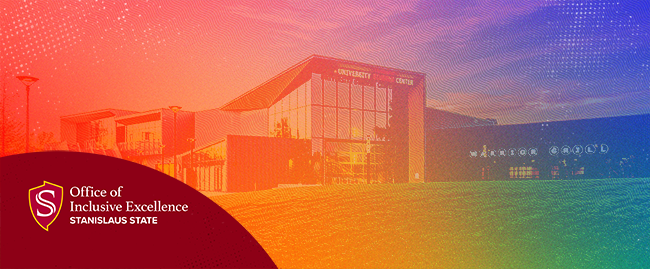
Dear Fellow Warriors,
As we begin Pride Month, we invite our campus community to reflect not only on the vibrant celebrations taking place across the world, but also on the history, struggles and resilience that Pride commemorates.
Pride Month traces its roots to the Stonewall uprising of June 1969 in New York City, a pivotal moment in LGBTQ+ history. In response to years of systemic oppression and police brutality, members of the LGBTQ+ community — led in large part by trans women of color such as Marsha P. Johnson and Sylvia Rivera — stood up and demanded dignity, safety and equality. That courageous resistance sparked a movement that continues today in the ongoing fight for justice and the affirmation of every person’s right to live freely and openly.
California's Central Valley has been home to many LGBTQ+ activists in their fight for visibility and inclusion. One notable figure from this region is El Daña, a pioneering drag king who began performing in 1964 and, in 1981, co-founded the Imperial Sequoia Empire de Tulare and Kings Incorporated in Visalia. El Daña's dedication to fundraising for charitable causes and unifying the gay community left an indelible impact on the region. Additionally, organizations such as CalPride have been instrumental in providing support and resources for the queer community across multiple counties, including Stanislaus, Merced, Madera and others. Their commitment to intersectional advocacy, trauma-informed care and gender-affirming services has empowered countless individuals.
Here at Stan State, we commemorate Pride Month by reaffirming our deep and ongoing commitment to LGBTQ+ inclusion. Our University thrives when all members of our community — regardless of sexual orientation, gender identity or gender expression — are empowered to be their full, authentic selves. But we also recognize that inclusion is not a static achievement; it is a continuous practice. We must confront discrimination wherever it exists, listen to the voices of LGBTQ+ students, faculty and staff, and work actively to create spaces of safety, respect and belonging.
Pride is not only a celebration; it is also a reminder of what it has taken to get here — and how far we have yet to go. As we participate in the events, exhibits and conversations taking place throughout this month, let us do so with intention. Let us educate ourselves and others, uplift those whose stories have been marginalized, and commit to creating a future that is more just and equitable for all.
To our LGBTQ+ community members: You are essential to the fabric of this University. We see you, we celebrate you and we stand with you — this month and every month.
With Pride,
Sacha Maria Joseph-Mathews
Vice President and Chief Diversity, Equity & Inclusion Officer

Dear Warriors,
Today marks the beginning of Asian, Pacific Islander and Desi American (APIDA) Heritage Month. We take this moment to celebrate the immense contributions, vibrant cultures and diverse histories that APIDA communities have brought to this country — and to our own University.
Asian-origin populations have been part of what is now the United States since the 1500s, when Filipino sailors arrived on the West Coast aboard the Spanish galleon Nuestra Señora de la Esperanza. The first major wave of Asian immigration came in the late 19th century, particularly to Hawai'i and the West Coast. Today, nearly 7 million Asian, Pacific Islander and Desi Americans live in California, representing more than 15% of the state’s population.
Across the nation, APIDA communities have played a vital role in shaping American society, contributing to advancements in science, technology, the arts, education and beyond. Here in the Central Valley, their legacy is deeply rooted — from the labor and leadership of Filipino farmworker advocates like Philip Vera Cruz and Larry Itliong, to the achievements of trailblazers like Tyrus Wong, the Chinese American artist who influenced generations through his work with Disney and Warner Bros; Harvey Akio Itano, a pioneering Japanese American biochemist whose research helped revolutionize our understanding of sickle cell disease; Brenda Song one of the first Asian American female characters to be featured prominently on a major U.S. children's TV network; and Bobbie Singh, current Mayor of Elk Grove and the first elected Sikh woman mayor in the United States.
As we honor these accomplishments, we must also acknowledge the challenges APIDA communities have faced — and continue to face — including systemic racism, anti-Asian hate and cultural stereotyping. This month is an opportunity to deepen our understanding, challenge biases and uplift the voices and stories of APIDA individuals in our community.
We encourage everyone on campus to engage in events, programs and conversations taking place throughout the month, including our 5th Annual Asian American Pacific Islander Heritage Month Event on May 12. Let us reflect on how each of us can contribute to building a more inclusive, equitable and just world. Through learning and connection, we strengthen our appreciation of diversity and foster a campus where everyone is seen, heard and valued.
To our APIDA students, faculty, staff and community members: We see you, we appreciate you and we thank you for the vital role you play in enriching Stan State. Whether celebrating Lunar New Year, Chuseok, Diwali or countless other traditions, your stories and contributions make our University stronger and more dynamic.
At Stan State, we remain committed to cultivating an environment where all voices are honored and celebrated. Wishing our APIDA community — and all Warriors — a joyful and inspiring APIDA Heritage Month.
Warm regards,
Britt Rios-Ellis, Ph.D.
President
Sacha Maria Joseph-Mathews
Vice President and Chief Diversity, Equity & Inclusion Office
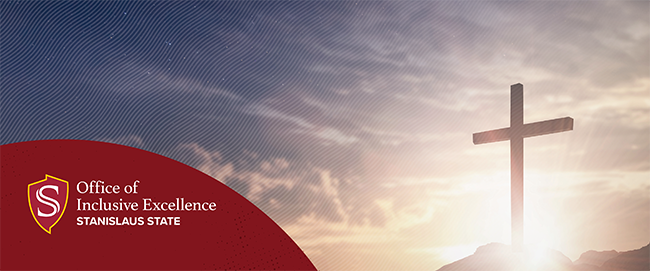
Dear fellow Warriors,
Yesterday, Christians across the globe celebrated the Resurrection of Jesus Christ. The presence of the risen Lord offers comfort to believers that no obstacle is too great for Jehovah to overcome — not even death itself. For Christians, Easter is a reminder of God’s boundless love for us and His victory over death, offering new life and the promise of eternal joy.
This morning, Pope Francis passed away, just hours after delivering his final Easter message in St. Peter’s Square. Pope Francis was seen as a beacon of hope and love for all and especially inspired more than a billion Catholics around the world to not only hear the scriptures but to live them each and every day. In his address to the U.S. Congress in 2015, he urged all Americans to “live by the Golden Rule and do unto others as you would have them do unto you.” He leaves a legacy of humanity and justice, calling on us all to advocate for those less fortunate. We mourn his passing, pray for God’s blessings on this compassionately strong leader, and reflect on his loving approach to Christ’s ministry.
This week also marks the celebration of Passover, a sacred time in the Jewish tradition that honors the journey from oppression to freedom. As families gathered to share in the Passover Seder and retell the story of liberation, we are reminded of the enduring power of faith, perseverance and community.
Easter and Passover alike are seasons rich with tradition and optimism for the future, inviting us to reflect on renewal, resilience and the power of community. In a time when many of us are navigating complex challenges, these holidays remind us of the importance of hope and transformation, calling us to renew our commitment to our faith and to one another. This time of year beckons us to embrace kindness and to find strength in the collective spirit of our campus.
As our Christian community rejoices in the glory of Easter, and our Jewish community reflects on the powerful meaning of Passover, let us also be mindful of those people across the world who cannot practice their religion or embrace their faith publicly. May we all be motivated to work together to build a supportive, inclusive and inspiring environment for all. To our Christian Warriors, we say, “Peace be with you,” and we wish you all a very Happy Easter filled with joy and the warmth of loved ones. To our Jewish Warriors and, we say, “Chag Pesach Sameach,” and may all who celebrate at this time of year find strength in faith, joy in tradition and hope for a brighter tomorrow.
Warmest regards,
Britt Rios-Ellis, Ph.D.
President
Sacha Joseph-Mathews, Ph.D.
Vice President and Chief Diversity, Equity and Inclusion Officer
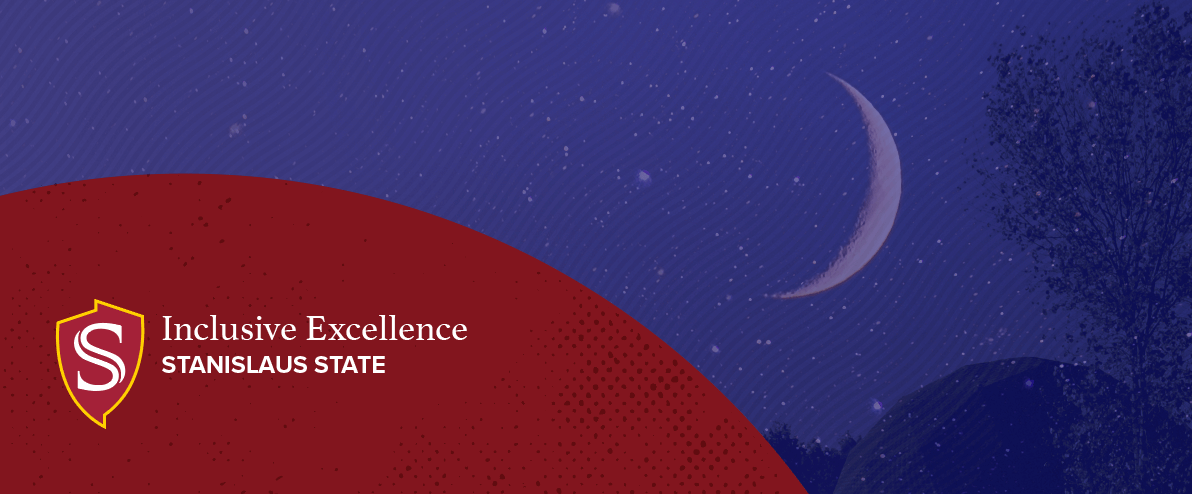
Hello Fellow Warriors, and to our Muslim Warriors we say: Eid Mubarak!
This week, we celebrated Eid al-Fitr (the festival of Breaking the Fast), when Muslims worldwide broke bread in Iftar dinners (breaking of the fast with family and friends) and spent time with their loved ones whilst celebrating their faith.
Eid marks the culmination of the month of Ramadan, a period of self-restraint during which Muslims show gratitude to Allah and seek forgiveness for their sins while fasting daily from sunrise to sunset. Fasting for Ramadan is one of the five pillars of Islam, as outlined in the Qur’an, along with prayer, almsgiving, faith and the Hajj (pilgrimage to Mecca).
Whilst Ramadan is a time of self-reflection, spiritual growth and a commitment to fasting and deep prayer, Eid is a time of joy, celebration, spiritual renewal and deep gratitude. It is a time to connect with family, friends and loved ones. For the Muslim community, it is also an opportunity to engage in acts of charity, to come together in unity and to show compassion to others.
At a time in our history where division is rampant and our differences are often highlighted in a negative light, let us come together to embrace the rich tapestry that is our campus community. We encourage all community members to take this occasion as a reminder of the values that unite us — values of kindness, understanding and collaboration. Let us continue to work together to ensure that Stan State remains a place where everyone, regardless of background, feels respected, supported and celebrated.
Please join us in wishing a joyful Eid Mubarak to the members of our Muslim community on both our Turlock and Stockton campuses and to our Muslim alumni across the globe. May this holiday bring you happiness, prosperity, peace and spiritual fulfillment. To everyone in our community, we offer our heartfelt wishes for health and happiness.
Warmest regards,
Britt Rios-Ellis, Ph.D.
President
Sacha Joseph-Mathews, Ph.D.
Vice President and Chief Diversity, Equity and Inclusion Officer
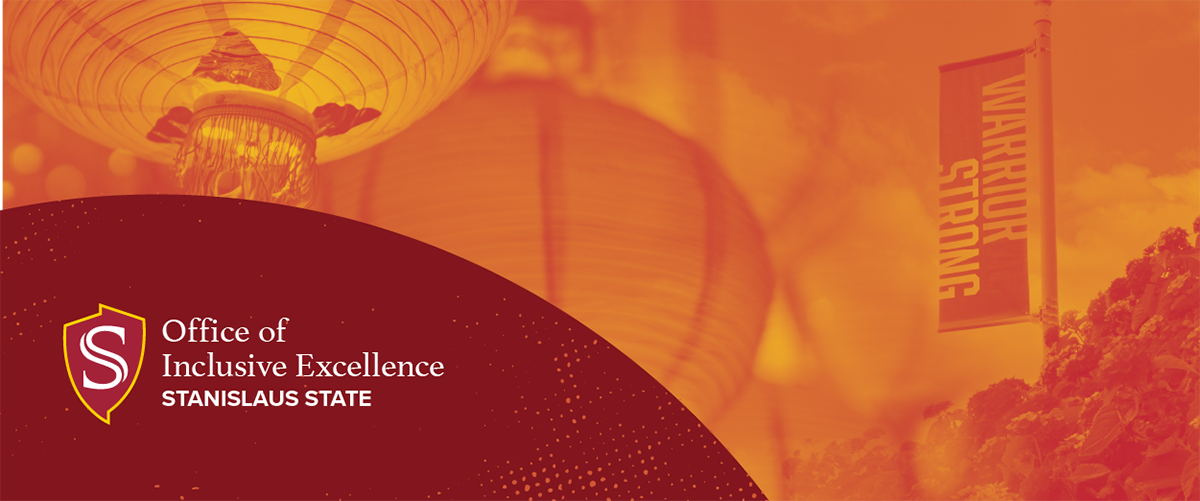
Dear Warrior Community,
As we welcome the Lunar New Year, we want to take a moment to celebrate this important occasion and its rich cultural significance. For many of our students, faculty, staff and alumni, this is a time to honor tradition, reflect on the past and embrace the opportunities of the year ahead.
Lunar New Year is a moment of renewal — a time to come together with family and friends, express gratitude and set new intentions for the future. It is celebrated by millions of people around the world, including many in our campus community, and serves as a reminder of the diverse cultural traditions that enrich our University.
As we embark on this new year, let us also reflect on the values of unity, resilience and hope that Lunar New Year represents. These values guide our work and our shared mission of fostering an inclusive, vibrant, supportive academic environment. We encourage everyone to take this opportunity to learn from one another, celebrate our differences and strengthen the bonds that make our community unique.
Whether you are marking this occasion with family, friends or through campus events, we wish you all a joyful and prosperous new year. May it be filled with good health, peace, abundance, prosperity and success in all you pursue. To our Asian Warriors, we say “新年快乐” (Xīn Nián Kuài Lè), “Gong Xi Fa Cai!” and Happy New Year!
As we celebrate this new beginning at Stan State, let us all recommit to creating a University that fosters a culture of inclusion, belonging and compassion for all.
Happy Lunar New Year, Warriors!
Warm regards,
Britt Rios-Ellis, Ph.D.
President
Sacha Maria Joseph-Mathews
Vice President and Chief Diversity, Equity & Inclusion Officer
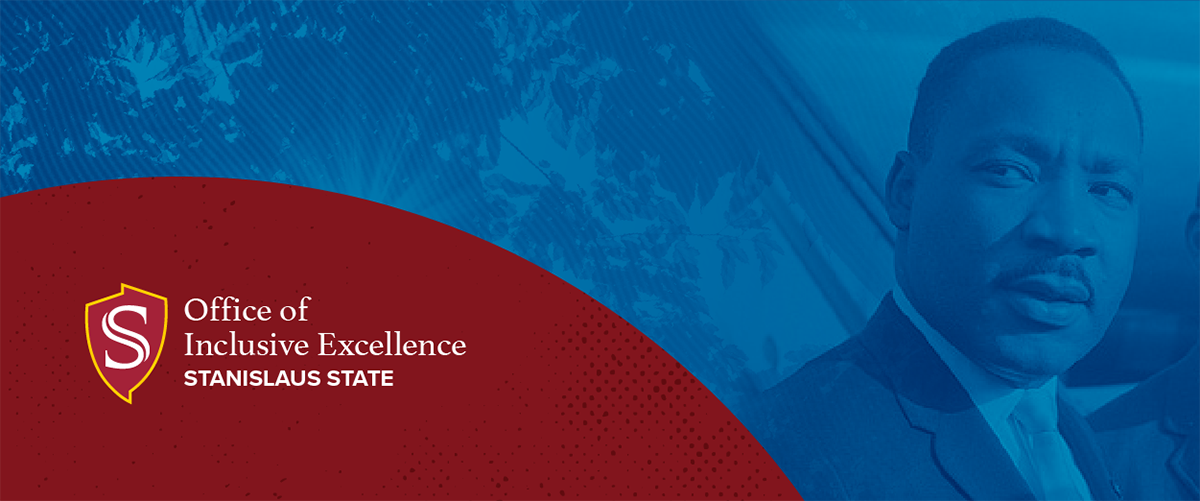
Dear fellow Warriors,
On this Martin Luther King Jr. Day, we come together to honor the life of a visionary leader whose work continues to inspire us. Dr. King’s commitment to justice, equality and nonviolent social change remains a guiding light, not only in the United States but around the world.
As we reflect on his profound impact, we are reminded of the values that bind us as a University community — values of respect, inclusion and a shared commitment to creating a more just and equitable society. Today is an opportunity to renew our dedication to these principles and to consider how we, as individuals and as a community, can contribute to the ongoing commitment to restorative justice that Dr. King so powerfully championed.
Let us use this day to reflect, to serve, engage, and reflect on the ways we can continue to advance the ideals of equity and opportunity for all. I encourage each of you to take part in activities or service projects that honor Dr. King’s legacy, and to carry the spirit of his message with you throughout the year.
We wish our entire Warrior family a Happy Martin Luther King Jr. Day. May every day be one where we celebrate both the rights and potential of all human beings and strive to be catalysts for positive change in our world.
Warm regards,
Britt Rios-Ellis, Ph.D.
President
Sacha Maria Joseph-Mathews
Vice President and Chief Diversity, Equity & Inclusion Officer
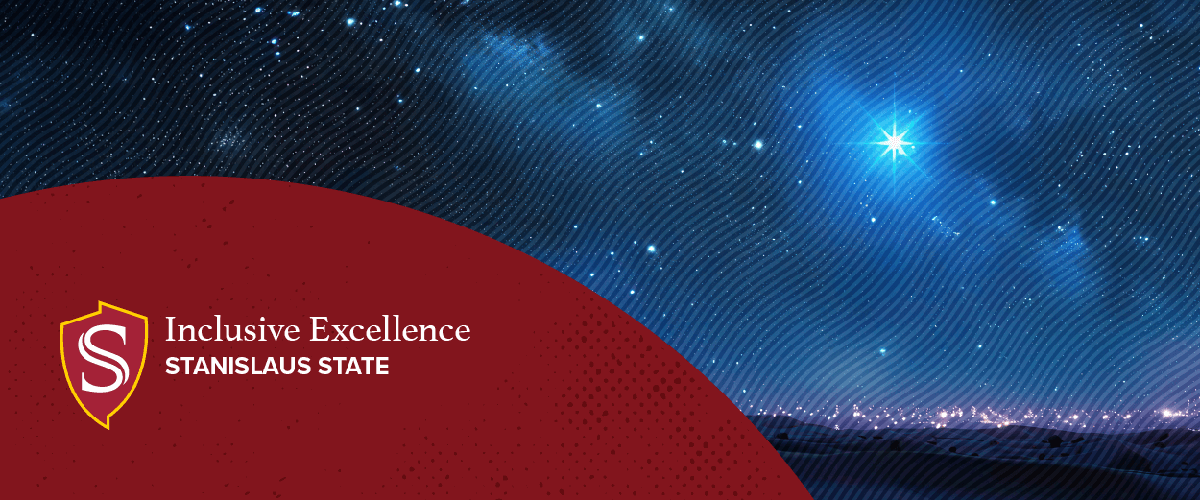
Dear Fellow Warriors,
As we approach the end of 2024, we want to take a moment to extend our warmest wishes during this season of celebration and reflection. Whether you are celebrating Christmas, Kwanzaa, Hanukkah or simply this time of year, it is a special opportunity to connect with family and friends and reflect on the values of love, compassion, and unity that are at the heart of these traditions.
To our Christian Warriors, we extend a warm “Merry Christmas!” May your days be filled with peace, joy and the warmth of togetherness. As we approach the Christmas season, let us take a moment to honor and reflect on the birth of Jesus Christ, who brought hope, salvation and light into the world. For Christians, this sacred day marks the fulfillment of God’s promise through the birth of His Son in Bethlehem. The season calls us to embody the virtues of Christ’s teachings: love, compassion, humility and selflessness. It is a time to extend kindness to those in need, reconcile with one another, and deepen our connection to God through prayer and worship. Christmas reminds us of the importance of kindness and giving and offers an opportunity to reflect on how we can bring light and hope into the lives of others. From the Día de la Virgen de Guadalupe on Dec. 12 through Christmas Day and the Day of the Three Kings (Reyes Magos) on Jan. 6, this holiday season provides us an opportunity to interweave specific religious and cultural beliefs and learn more about the great celebrations that comprise our history.
To our Jewish Warriors observing Hanukkah, we wish you Happy Hanukkah or Chag Hanukkah Sameach. May the Festival of Lights bring you moments of reflection on the values of resilience, hope and the triumph of light over darkness. Hanukkah reminds us of the strength found in community, the importance of family traditions and the power of perseverance in the face of adversity. Whether you are lighting the menorah, gathering for festive meals or simply reflecting on the deeper meaning of this season, we encourage everyone to take a moment to appreciate the light we bring into one another’s lives. May the menorah’s glow symbolize our collective strength and the ways we each brighten our respective communities.
As we enter the season of Kwanzaa, we would like to say “Habari Gani” and wish our Black students, faculty, staff and their families, as well as to all who observe this important holiday, a blessed Kwanzaa. May this season inspire you to reflect on the richness of African heritage and the shared values that connect us all. At the heart of Kwanzaa are the seven principles, or Nguzo Saba, which include Unity, Self-Determination, Collective Work and Responsibility, Cooperative Economics, Purpose, Creativity and Faith. These principles offer powerful lessons for all as we work together to build a more inclusive and compassionate University community rooted in respect, solidarity, and shared purpose. Kwanzaa is an invitation to reflect on the ways we can contribute to a brighter future, both individually and collectively.
At Stan State, we cherish our diversity and the rich tapestry of our respective communities. As we celebrate these traditions, let us also remember the ways in which we are connected as a University community, bound by a shared commitment to learning, growth, socioeconomic mobility and the pursuit of knowledge. In the spirit of this season, may we continue to build bridges of understanding and kindness and strive toward creating a space where we actively celebrate and learn from each other.
We wish each of you a peaceful, joyous, and prosperous holiday season, and we look forward to collaborating on Stantastic initiatives in 2025!
Warm regards,
Britt Rios-Ellis, Ph.D.
President
Sacha Maria Joseph-Mathews
Vice President and Chief Diversity, Equity & Inclusion Officer
Dear Fellow Warriors,
Today, on the occasion of the International Day of Persons with Disabilities, we pause to reflect on the tremendous contributions of individuals with disabilities to our global society. This day, recognized by the United Nations, provides an opportunity to renew our commitment to inclusivity, accessibility and the empowerment of all people, regardless of their physical or mental abilities.
At Stan State, we understand that diversity in all its forms — whether it be in culture, identity, background or ability — is not only a strength but a vital part of the rich tapestry that defines our academic and social community. Our mission is to ensure that every individual, regardless of their abilities, can thrive, learn and contribute meaningfully to the campus environment. From accessible facilities and technology to academic support and student services, we are committed to breaking down barriers and providing an environment where all members of our community feel valued, respected and empowered to reach their full potential.
However, our work is far from complete. As we celebrate the achievements of individuals with disabilities and the progress we’ve made, we also recognize that there is much more to do. We must continue to challenge stereotypes, dismantle barriers — both physical and attitudinal — and ensure that every individual, regardless of their ability, has the opportunity to succeed. Together, we can create a University that celebrates difference, amplifies voices and provides opportunities for everyone to shine.
At Stan State, You Belong! So today, let us all recommit to creating a University that is accessible and inclusive for students, faculty, staff and visitors with disabilities and to fostering a culture of inclusion and compassion for all.
Warm regards,
Britt Rios-Ellis, Ph.D.
President
Sacha Maria Joseph-Mathews
Vice President and Chief Diversity, Equity & Inclusion Officer

Dear Fellow Warriors,
Today, on World AIDS Day, we come together as a University community to reflect on the progress we have made in the fight against HIV/AIDS and to reaffirm our commitment to supporting those affected by the virus. This day serves as a reminder of the challenges that remain, but also of the resilience, compassion and dedication that continue to drive us toward a world without HIV/AIDS.
As an institution of higher learning, we understand that education and awareness are essential to overcoming the stigma and misinformation that still surrounds HIV/AIDS. It is through research, dialogue and empathy that we can create an environment where everyone is treated with dignity and respect, regardless of their health status.
On this World AIDS Day, let us honor those who have lost their lives to the virus, support those living with HIV/AIDS and commit ourselves to breaking down the barriers that still prevent access to care, treatment and prevention. We also recognize the tireless work of researchers, healthcare professionals and advocates who continue to make strides toward finding a cure and providing better care for those affected.
Let us collectively work toward a future where stigma no longer defines the lives of those with HIV/AIDS, and where health, compassion and hope are within reach for everyone, everywhere.
Sincerely,
Britt Rios-Ellis, Ph.D.
President
Sacha Maria Joseph-Mathews
Vice President and Chief Diversity, Equity & Inclusion Officer
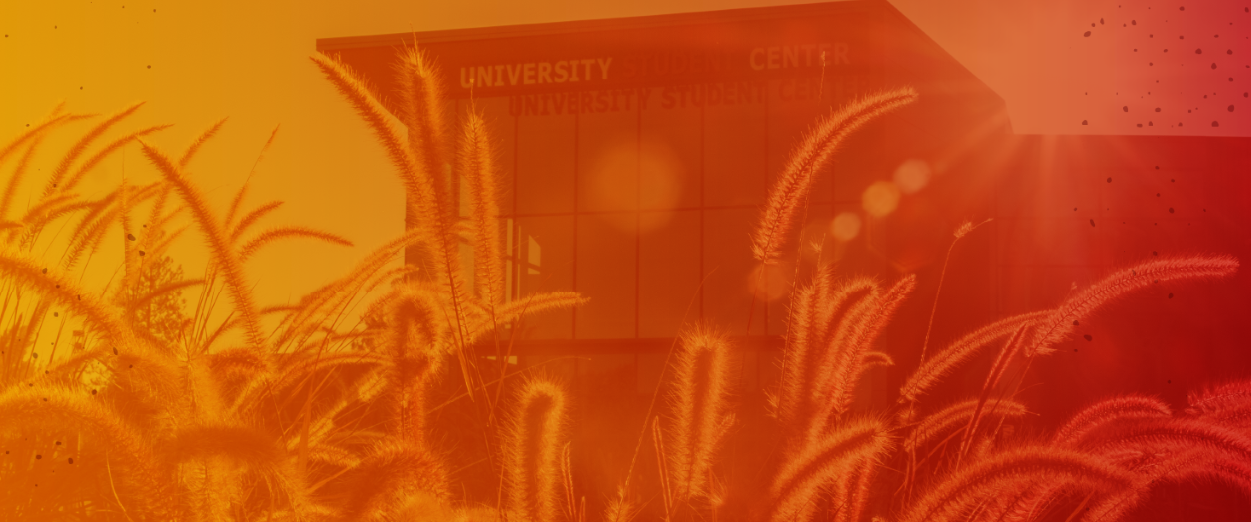
Buenos Días Guerreros,
This week marks the beginning of National Hispanic Heritage Month. As a Hispanic-Serving Institution (HSI) with 62% of our students identifying as Latinx, Stanislaus State is proud and excited to celebrate the richness of Latinx heritage in the United States, and particularly here in the Central Valley. Throughout the month, we will show our appreciation for Latinx cultures and core values that drive our nation’s progress. Simpatía, familia y familismo, respeto, confianza y esperanza are all key values that make the Latinx population great! From the quinceañeras photographed on our campus to the altares of Día de Los Muertos, the myriad Latin American and Caribbean countries that comprise the Latinx population reinforce what we have in common. Although there may be differences in food, traditions and artistic expression, the intersections of Latinx cultures are why we celebrate and revel in the rich tapestry of our vibrant community here at Stan State.
Nearly 2.5 million Latinos live in the Central Valley, and their contributions are significant. Whether you are a recent immigrant or can trace your family heritage back to the Bracero Program period or even Alta California, the Central Valley has been home to generations of Latinx families and is now poised to be the fastest-growing region in California.
During National Hispanic Heritage Month, we reflect on Latinx activism — from the migrant worker movement led by Cesar Chavez and Dolores Huerta to Chicano activism with leaders such as Reyes Tijerina, Rodolfo “Corky” Gonzales, Rosalio Muñoz and José Angel Gutierrez, Latinos have always been involved in the fight for justice, the true American dream, advocating for civil rights, labor rights and social equality. Their legacy of activism and their amazing dream-making potential continue to inspire and empower our community today.
Throughout this month, we honor Hispanic art and music. Artists like Frida Kahlo, Rufino Tamayo and Fernando Botero have left an indelible mark on the world, while musicians including Selena Quintanilla, Celia Cruz, Bad Bunny, Peso Pluma and Carlos Santana have brought the vibrancy of Latinx culture to the global stage. We will also highlight local artists and musicians, such as Modesto’s Marca MP and Eslabon Armado of Patterson, who continue to enrich our cultural landscape. This is a month when we will also celebrate Latinx cuisine; Chilean empanadas, Mexican mole, Salvadorean pupusas and Colombian sancocho. We relish the richness of the cuisines that come from south of the border.
As an institution of higher learning, it is critical that we also highlight the intellectual and artistic expertise of the Central Valley’s Latinx community and the tremendous contributions they have made to academia and beyond, such as the first Mexican American astronaut José Hernández, and Poet Laureates Juan Felipe Herrera and Ada Limón. As part of our Hispanic Heritage Month events, we will show the award-winning film starring Michael Peña, depicting José Hernández’s inspirational story. Please join us as we celebrate the many ways Latinx/Chicanx from the Central Valley have enriched perspectives locally and globally!
Yet, National Hispanic Heritage Month is more than a celebration — it reflects our enduring commitment to our Latinx students and their families and communities here in the Central Valley. We take pride in facilitating our students’ successes and ensuring they have the opportunities, resources and support needed to thrive throughout their personal, academic and professional journeys.
Please mark your calendar for the many celebratory events happening throughout the month from Sept. 15 through Oct. 15. Check our University Events Calendar often for updated information and know that there are still a few activities and workshops we are adding.
One special event is a free concert by East LA’s finest, Las Cafeteras presented by Mocse Credit Union on Oct. 2 at 6 p.m. Please bring your friends and family as it will be a great show with dancing and food trucks.
So, whether you identify as Hispanic, Latino/a/e/x, or Chicano/a/x, we are proud to honor the richness of your identity, recognizing the diverse diaspora that makes our nation great! Whether your family is originally from the regions of Jalisco or Michoacán in Mexico, Tierra del Fuego in Argentina or anywhere in between, at Stan State, you belong!
Please join us in wishing all the members of our Latinx family a Happy National Hispanic Heritage Month!
¡Feliz Mes de la Herencia Hispana!
Britt Rios-Ellis, Ph.D.
President
Sacha Joseph-Mathews, Ph.D.
Vice President and Chief Diversity, Equity & Inclusion Officer
Dear Campus Community,
On June 19, 1865, Union General Gordon Granger arrived in Galveston Bay, Texas, delivering profound news to more than 250,000 enslaved individuals. They were the last to learn of their freedom in the United States, more than two years after President Lincoln’s Emancipation Proclamation. Granger’s proclamation stated:
“The people of Texas are informed that in accordance with a Proclamation from the Executive of the United States, all slaves are free. This involves an absolute equality of rights and rights of property between former masters and slaves, and the connection heretofore existing between them becomes that between employer and hired laborer.”
Juneteenth commemorates this pivotal moment, encapsulating the complex relationship African Americans have historically shared with the U.S. government. Despite the Emancipation Proclamation granting freedom, nearly three years passed before Union forces intervened to enforce it, as white plantation owners resisted acknowledging their former slaves’ liberty. This deep-seated distrust between black communities, the government and white power structures in America originates from a deeply traumatic history.
Juneteenth symbolizes both the fulfillment of a promise and a betrayal of unmet expectations. The Reconstruction Era initially brought political advancements, such as citizenship and voting rights through the Thirteenth and Fourteenth Amendments, which enabled African Americans to hold positions in state legislatures and Congress. However, these gains were short-lived. Following emancipation, initiatives like Special Field Order No. 15 provided land to thousands of Black families, offering hope during Reconstruction. Regrettably, President Johnson rescinded these promises, returning land to previous owners. By 1877, federal troops withdrew from Southern states, signaling the end of Reconstruction and the onset of discriminatory laws, extrajudicial violence, economic hardship and the emergence of the Ku Klux Klan.
It would take a century for African Americans to regain voting rights, and many decades more before witnessing the election of the first Black president of the United States. Despite enduring racism, adversity, and injustice inflicted in part by the very government that granted their freedom, African Americans have consistently overcome challenges to celebrate their heritage with resilience and joy.
Today, Juneteenth honors the progress made while reminding us of the ongoing journey toward justice, echoing the words of Dr. Martin Luther King Jr.: “The arc of the moral universe is long, but it bends toward justice.”
Last week, the CSU system celebrated Juneteenth, which brought together hundreds of staff, faculty and students in Sacramento for music, academic reflections and community fellowship. Join me now in extending warm wishes to our fellow Warriors for a Happy Juneteenth, celebrating Black history, resilience and the relentless pursuit of freedom.

During Pride Month, we celebrate the diversity of our lesbian, gay, bisexual, trans, queer/questioning, intersex, and asexual (LGBTQIA+) Warriors. The “+” allows us to hold space for the many sexual identities that are expanding and evolving, which may not specifically be mentioned here. As a campus community, we look forward to celebrating Pride during the fall semester in October, which is LGBTQ History Month. Still, I also wanted to take some time in June to acknowledge, celebrate and reflect on the struggles and triumphs of the LGBTQIA+ community and to share some information about how far we have come as a nation and how far we still have to go to ensure our queer community members in the United States feel seen, loved, valued and respected by everyone.
The first LGBTQ+ activist known to many is a formerly enslaved person, William Dorsey Swan, who described himself as a drag queen in the 1880s. He was arrested several times in Washington, D.C., as he fought for the right of members of the LGBTQ+ community to assemble.
In 1924, Henry Gerber founded the first gay rights organization in the United States. In 1950, Harry Hay formed the Mattachine Foundation (later the Mattachine Society) to also fight for gay rights in the U.S. But a few years later, the Lavender Scare brought homophobic ideologies into the open, resulting in many gay individuals losing government jobs and appointments.
In 1953, President Eisenhower passed Executive Order 10450, which banned homosexuals from working in the federal government. This law stayed in place until 1993 when the U.S. government moved to the “Don’t Ask, Don’t Tell” rule, which allowed gay service members to serve as long as they didn’t disclose their sexual orientation.
Two years later, in 1955, Del Martin and Phyllis Lyons, the couple that would later make American history as the first same-sex couple to obtain a marriage license in the United States, formed the Daughters of Bilitis, the first lesbian rights organization in San Francisco.
The 60s and 70s were a critical time for gay and transgender activism as the Compton Cafeteria Riots in 1966 in the Tenderloin District of San Francisco, followed by the Stonewall Riots in 1969 in NYC, are both seen as pivotal for trans and gay liberation in the United States. The riots signified a rebellion against the constant police harassment the gay community faced across the nation.
In 1973, the American Psychiatric Association voted to remove homosexuality as a form of mental illness from its official list.
In 1977, Harvey Milk, the first openly gay politician elected in California, became a member of San Francisco’s Board of Supervisors. Eleven months later, in 1978, he was assassinated along with the city’s mayor, George Moscone. The first National March on Washington for Lesbian and Gay Rights occurred a year later, on October 14, 1979.
In the 1980s and 90s, the AIDs epidemic disproportionately impacted the gay community, and the trauma, stigmatization and marginalization of those infected with the disease continues today.
In 1996, the Defense of Marriage Act barred the U.S. government from any recognition of same-sex couples and their unions.
However, in 2004, Massachusetts became the first state to make same-sex marriage legal.
Four years later, in 2008, voters in California made same-sex marriage illegal. The fight for marriage equality would continue until June 26, 2015, when the Supreme Court made it illegal to ban same-sex marriage in the United States.
On October 28, 2009, Congress passed the Matthew Shepard Act, which makes any crime caused by a victim’s perceived gender, sexual orientation, identity or disability a federal hate crime.
In 2010, Congress repealed “Don’t Ask, Don’t Tell” and lifted the ban on openly gay individuals serving in the military.
On June 9, 2015, Secretary of Defense Ash Carter announced the Military Equal Opportunity Policy, allowing openly gay and lesbian military members to serve.
On June 26, 2015, the Supreme Court ruled that no U.S. state can ban same-sex marriage.
On June 24, 2016, President Obama designated the Stonewall National Monument (at the site of the Stonewall Uprising) as the first national monument to lesbian, gay, bisexual and transgender rights.
On November 6, 2018, Jared Polis became the nation’s first openly gay man elected governor.
On June 15, 2020, the Supreme Court extended federal law protection to LGBTQ workers from discrimination based on sexual orientation and gender identity.
On February 2, 2021, Pete Buttigieg became the first openly gay member of the Cabinet, and on March 24, 2021, Rachel Levine became the first out transgender federal official to be confirmed by the Senate.
On June 21, 2021, Carl Bassib, a defensive lineman with the Las Vegas Raiders, became the first active NFL player to announce that he is gay.
On December 13, 2022, President Boden signed the Respect for Marriage Act, which gives federal protections for interracial and same-sex couples.
This short review of the LGBTQIA+ community’s struggle for equality is by no means an encapsulation of the complete history of gay rights or struggles. Still, it offers a small window into some of the major events and developments significant to the LGBTQIA+ community.
Today, the tremendous legacy the LGBTQIA+ community gives us on activism, intersectionality and human rights serves as a model for the power of human resilience and personal conviction. Here at Stan State, belonging is a big part of our culture, and we want everyone to feel included and that they belong. Please join me in wishing our fellow LGBTQIA+ Warriors a Happy Pride Month.
During the month of May, we celebrate the rich cultural heritages of Asian Americans, Desi Americans and Pacific Islanders. Each of these groups of immigrants has played important roles in our nation’s development and history, and this month we reflect on the significant impact they have had on American life.
Asian-origin populations have historically been in the territory that would eventually become the United States since the 1500s, when a group of Filipino sailors landed with a Spanish galleon Nuestra Señora de Esperanza on the West Coast.
After this initial wave, more Filipinos arrived settling primarily in Louisiana and California. Filipino soldiers fought alongside Americans in the Battle of New Orleans and the Civil War.
After the Philippine-American War ended in 1902, the second wave of Filipinos came to the United States as U.S. nationals; many worked on farms as laborers. Filipinos were allowed to enlist in the U.S. Navy and many enlistees brought their wives with them from the Philippines. However, after the Philippines gained independence, the Philippine Independence Act of 1934 reclassified Filipinos as aliens under immigration law. Then, under the Luce-Cellar Act of 1946, the number of Filipinos allowed to emigrate to the U.S. was reduced to 100 per year. The 100 person quota was lifted in 1965, once again allowing Filipinos to emigrate to the United States. Today there are more than 4.5 million Filipino Americans living in the United States.
The Chinese arrived in the U.S. in large numbers on the West Coast in the 1850s and 1860s to work in the gold mines and railroads. But once the railroad was completed in 1869, Chinese Americans faced tremendous racism and prejudice. In 1882, Congress passed the Chinese Exclusion Act; an absolute 10-year ban on Chinese laborers immigrating to the United States. For the first time, federal law named a specific ethnic working group as banned from entry in the U.S. The law also deeply impacted Chinese immigrants already living in the U.S. by creating a system of regulation and monitoring, with federal and state courts refusal to grant U.S. citizenship to Chinese immigrants already in the U.S. This practice of limiting immigration based on country of origin marked the beginning of the national origin legacy in U.S. immigration laws and continued until 1990 until congress passed the Immigration Act. Chinese Americans are the largest Asian group in the United States with over 5.4 million Chinese Americans living in the U.S. today.
Japanese and Korean immigrants began to arrive in the U.S. in 1890 and 1903 respectively and mostly lived in Hawaii working on plantations. Koreans migrated primarily through Christian missionary work and when the Chinese Exclusion Act banned Chinese immigration, Korean immigration to the United States increased significantly. When plantation labor contracts expired most of the Korean immigrants moved to the West coast where they established self-employed businesses.
South Asians have also been in the United States for centuries with the first group of South Asians arriving between 1897 and 1924. These immigrants were primarily of Sikh farmers from Punjab, India, alongside some Bengali Muslims. Since then, we have seen immigrants migrate to the United States from Afghanistan, Bangladesh, Bhutan, India, Maldives, Nepal, Pakistan and Sri Lanka.
Pacific Islanders first migrated from Oceania to the United States in the last decade of the 18th century. These Native Hawaiians came on British ships as fur traders and arrived in the Pacific Northwest. They would go on to develop the agriculture, fishing and hunting sectors of the economy in that area and build the first infrastructure in the cities of Oregon. The native Hawaiians would be later joined by the Tahitians, Māoris and Samoans.
Significant Thai immigration to the United States began in the 1960s and was largely the result of a U.S. presence in Thailand during the Vietnam war. Most of these immigrants resided in Los Angeles and New York City. However, by the 1980s, most Thai immigrants in the United States lived in close proximity to American military bases. Today there are more than 300,000 Thai people living in the United States.
Vietnamese immigration to the U.S. started in the 1950s, but large scale immigration to the US started after the Vietnam war ended in 1975. South Vietnamese refugees with close ties to America or concern for retribution from the communist ruling party fled to the U.S. and settled primarily in California and Texas. Today there are more than 1.3 million Vietnamese people residing in the United States.
According to the Hmong American Center, “the Hmong migrated from Southern China in the 19th century to the mountainous areas of Laos, Vietnam and Thailand.” During the Vietanam war, the Hmong people worked with the CIA to launch a “secret war” in Laos. The assistance given by the Hmong people to the United States costed them dearly, as the Hmong were directly targeted by the communist governments of Laos and Vietnam. According to the Homong American Center, “The Hmong were hunted down, taken to hard labor concentration camps and persecuted. Their villages were sprayed with chemical weapons and bombed with napalm. It is estimated that more than 10% (35,000) of the entire Hmong population in Laos died as a result of the war and its aftermath. Many who survived suffered physically, mentally and emotionally until this day.” Directly following the war, 1,000 Hmong individuals were brought to the United States and in the subsequent months an additional 30,000 Hmong people immigrated to the U.S. living primarily in Wisconsin, Minnesota and California. Today there are more than 350,000 Hmong people living in the United States.
Similar to Vietnamese and Hmong immigration patterns, Laotian refugees came to the U.S. after the Vietnam war, fleeing a communist government in Laos. A second wave of immigrants arrived in the 1980s and today the largest numbers of Laotian Americans live in California and Texas.
We outlined the various Asian immigrants to the United States to demonstrate the variety and richness of Asian American culture, history, background, language and knowledge. In California, Asian Americans represent the 3rd largest ethnic group in the State.
At Stan State we value our Asian students, staff, faculty, alumni and surrounding community. From Lunar New Year to Chuseok and Diwali, we embrace all of the diversity of our Asian Warriors at both our Turlock and Stockton campuses. I wish you a Happy Asian American and Pacific Islander Desi American Heritage Month.
Good evening fellow Warriors, and to our Muslim Warriors, I say, “Eid Mubarak!”
This evening marks the beginning of Eid-al-Fitr (the festival of Breaking the Fast), the culmination of Ramadan; a period of fasting and prayer for Muslims around the world. Ramadan is the ninth month in the Islamic lunar calendar, and it is a time when Muslims practice self-restraint and compassion as they aim to grow spiritually and deepen their connection with God. During this month, Muslims show gratitude to Allah and seek forgiveness for their sins while daily fasting from sunrise to sunset. Fasting for Ramadan is one of the five pillars of Islam as outlined in the Qur’an along with declaration of faith, prayer, almsgiving, and Hajj (pilgrimage to Mecca).
According to Islamic tradition, the first Eid was celebrated in Medina in 624 A.D., when the Prophet Muhammed (peace be upon him) marked the end of a month of fasting. Today, Muslims from around the world participate in this holy day, and here at Stan State we extend warm wishes to all of our Islamic communities as they break bread in Iftar dinners (breaking of fast with family and friends) and spend time with their loved ones whilst celebrating their faith.
It is our goal here at Stan State to encourage an inclusive environment that supports all of our campus community.
We are proud of our diversity, and we revel in the rich tapestry that is our campus community. Please join me in wishing Eid Mubarak to the members of our Muslim community on our two campuses in Turlock and Stockton and to the wider Central Valley at large.
Warmest regards,
Sacha Joseph-Mathews, Ph.D.
Vice President and Chief Diversity, Equity and Inclusion Officer
April 1, 2024
Good day, fellow Warriors, and to our Assyrian community I say, “Reese Sheeta brikhta!” Today, we are commemorating and reflecting on two significant holidays that hold importance for our community.
On April 1 each year, we celebrate Akitu — an Assyrian holiday often referred to as Kha b’Nissan or Assyrian Day. This is a very important holiday for persons who identify as Assyrian, and it marks the beginning of the Assyrian New Year. Here at Stan State, we are pleased to recognize the importance of this day to our campus and the broader community, as Turlock is home to one of the largest Assyrian populations in the United States.
In Ancient times, the Akitu festival was celebrated for 12 days and marked the beginning of spring. Tens of thousands of people from all over the Assyrian Empire would travel to its capital city, Nineveh, to partake in the festival.
Now, there are Akitu parades and celebrations throughout the United States to commemorate Kha b’Nissan. The holiday symbolizes renewal, revival and a new beginning. We are proud of our diversity here at Stan State, and we revel in the rich tapestry that is our campus community.
As we celebrate the significance of Akitu, we also pause to acknowledge another important day, César Chávez Day. On this day, we celebrate César Chávez’s life of work and service. He was a crusader for social justice, a fighter for worker rights and a relentless voice for the unheard and the forgotten. His work in the Central Valley as the founder of the National Farm Workers Association brought attention to the economic injustices, racism and discrimination that was rampant on farms in the Central Valley and throughout California. But his activism also brought health care, financial services, job training and even daycare to farm workers, thereby transforming the lives of numerous generations to come. Today, we honor the impact of César Chávez not only on the LatinX community but also on all communities in the Central Valley and beyond, and we reflect on the work that lies ahead to build a brighter future for all of us.
To further commemorate and honor our Central Valley farm worker leaders César Chávez, Dolores Huerta and Larry Itliong, our campus will host the 29th annual Sí Se Puede celebration on April 11, from 5:30 to 8 p.m. at the Student Center steps. This year's theme will be “Kapamilya: Honoring Filipino Farmworkers & Families.” The program will include a keynote address by Dr. Sara Cadalig and entertainment by Stan State alumna Liliana Hernandez, Balet Folklorico Los Luceros and a special debut by Mariachi de Stan State.
I hope many of you can join us for this celebration and commemoration on April 11. And today, please join me in wishing Reesh Shato Brikhto to the members of our Assyrian community here on campus and in Turlock at large.
Warmest regards,
Sacha Joseph-Mathews, Ph.D.
Vice President and Chief Diversity, Equity and Inclusion Officer

March 1, 2024
Women’s History Month is a time when we contemplate and celebrate the history, contributions, struggles and activism of women. We explore all the ways women have enriched our lives, our experiences, our families and our organizations. We lean into woman and girl power to defy the status quo and we explore what femininity was, is and can be in future generations.
Throughout the history of the United States, women have fought for independence, equal access to education, healthcare, the right to vote, the right to control their bodies, their finances, their destinies — and we acknowledge that struggle continues. In 2024, there is still a gender pay gap, reproductive rights are in question and less than 10% of all C-suite positions are held by women.
For centuries, women played critical roles in industry, service, the arts, as innovators, entrepreneurs, scientists and explorers. Women have proven their equality in every aspect and fabric of society.
March is a month where we get to celebrate all that it means to be a woman. We pay tribute to the diversity of gender, identity and sexuality inherent in womanhood, and we acknowledge the myriad ways in which it is perceived and experienced within our campus community.
As we celebrate Women’s History Month, let us recommit ourselves to fostering an inclusive environment where every woman, regardless of background or identity, can thrive. Together, let us honor the past, celebrate the present and pave the way for a future where gender equality is not merely an aspiration, but a lived reality for all.
Go, Warriors!
Sacha Joseph-Mathews, Ph.D.
Vice President and Chief Diversity, Equity and Inclusion Officer

Feb. 1, 2024
Today marks the beginning of the first week of Black History Month. Throughout this month, we will highlight both the sacrifices African Americans have made here in the US, as well as celebrate the amazing richness that Black heritage has added to our American tapestry and our campus community. This February, we will recognize African American accomplishments, whilst celebrating Black culture and history. We know that Black history is American history and commemorating the contributions of the Black community helps to make our community more vibrant. However, while February is the month dedicated to promoting awareness around Black heritage, it is critical that we acknowledge the importance of African American heritage throughout the year and not just in Black History Month.
As we celebrate Black History Month, we must also consider February as a time to reflect upon America’s complex history, including the impact of slavery —a moral stain that we still grapple with today through revisionist ideologies, institutionalized racism, systemic inequalities and historical trauma that is embedded in the DNA of millions of the descendants of slavery. But Black history isn’t only about the trauma of the middle passage and subsequent atrocities Black folk ensured. It is about resilience and pride, it is about the richness of Black culture and it is a celebration of a dynamic and innovative group of people. It is about understanding the role of the African diaspora in African American history and the influence of Black cultures from Africa, South America and the Caribbean on Black heritage today. It is an examination of the survival of Black communities even in the face of great adversity, and a reflection on the cost of such trauma on the human condition. Black History Month serves as a reminder of how far we have come and at the same time how much further we still have to go.
As Warriors, we know that diversity is built into our DNA, and belonging and inclusion are not just goals, but among our most treasured values. I encourage you to spend some time reading up on Black history this February and exploring the richness of Black American heritage. Join us as we celebrate Black history via several events both on the Stockton and Turlock campuses.
I will end with a quote from The Reverend Dr. Martin Luther King Jr.: “Our goal is to create a beloved community, and this will require a qualitative change in our souls as well as a quantitative change in our lives.”
I look forward to growing this beloved community with you as we celebrate all the heritage months.
Go, Warriors!
Sacha Joseph-Mathews, Ph.D.
Vice President and Chief Diversity, Equity and Inclusion Officer
Updated: June 05, 2025